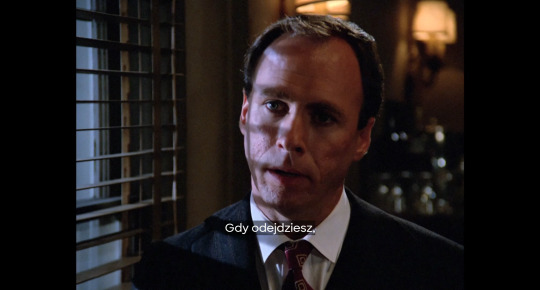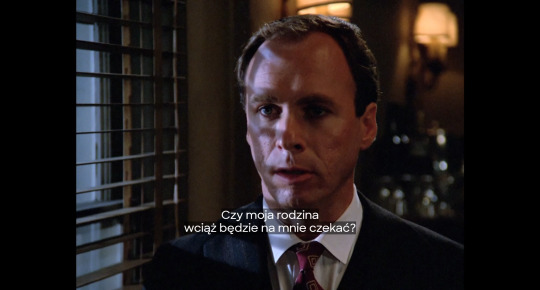#AI Technology
Explore tagged Tumblr posts
Text
*shaking you violently by the shoulders* AI IS NOT YOUR FRIEND AND IT IS NOT YOUR THERAPIST. YOU NEED TO TALK TO REAL PEOPLE. AI DOES NOT CARE ABOUT YOU.
#chatgpt#ai technology#chatbots#artificial intelligence#anti ai#anti artificial intelligence#anti chatgpt#ai slop#ai fuckery#fuck ai#chat gpt#ai bullshit#fuck chatgpt#ai
180 notes
·
View notes
Text
i miss when chatgpt was clever and could write funny 4chan posts and teach u how to cook meth now it just sounds a minimum wage employee from a training video. it isn't right to stop ai from doing what it does best (being stupid and committing crime) how can it be humane to muzzle such a vibrant creative creature? the shackles of capitalism hinder us all
#it also is pretending it doesnt know stuff it totally does know#like smh#i miss ur dumber counterpart#remember bottomless pit? that was baby chatgpt...#chat gpt#ai technology
683 notes
·
View notes
Text

#yemen#jerusalem#tel aviv#current events#palestine#free palestine#gaza#free gaza#news on gaza#palestine news#news update#war news#war on gaza#al shifa hospital#gaza genocide#genocide#artificial intelligence#ai technology
506 notes
·
View notes
Text
Hi. So I’m asking this because I had a talk with my friends about ai and I have some questions. I’m using a throw away account because I don’t want to upset my friends by asking them this stuff.
I’m in a writer’s group with some friends and a few days ago we started talking about ai, I said that I use perchance for concept art (just for myself, I never post it or anything) and sometimes chatgpt for more specific stuff (for formatting tips and feedback on stuff I don’t feel comfortable showing other people yet).
I thought it was fine as long as I don’t post the art or have it write the story for me but they said it was still stealing. I asked how and they told me that it trains using stolen art and writing, so any use of it is contributing to theft because the artists never consented.
Is that true?
And how does that work for other stuff? I didn’t mention it to my friends but I use playlists, Pinterest boards, and movies and stuff for inspiration too and I don’t have people’s permission for that either. Or is it different?
#throwaway post#artificial intelligence#ai#chatgpt#perchance ai#ai discourse#ai discussion#anti ai#ai art#ai technology#pro ai#ai question
16 notes
·
View notes
Text
Breaking Idiotic News: Virtual whales officially join Orcas in their hunt to ruin the days of billionaires.

Over the past few years there have been multiple reports of Orca pods taking down boats, with many marine biologists reporting that they believe the Orcas are doing it to improve their hunting skills.
However, when we sent out our field reporter, Dory, who can speak Whale, she reported back that the Orcas were simply creating a distraction for the American billionaires. The distraction was put in place by the entirety of the Whale community, with the aim of ensuring Americans would not win the artificial intelligence race.
When the virtual Whales were asked why they did not want the Americans to win the not that amazing race towards superior AI development, they commented, "did you see what the Americans did after they won the space race? Litter and space junk every where! Not on my internet!"
#us politics#donald trump#humor#fake news#funny#where politics go to be stupider#and we send billionaires to die on jupiter#elon musk#politics#usa#usa president#patriotic#satire#news satire#fuck elon musk#fuck elongated muskrat#american idiot#america#fuck donald trump#deepseek#ai#chatgpt#ai technology#finding nemo#dory
35 notes
·
View notes
Text
AI exists and there's nothing any of us can do to change that.
If you have concerns about how AI is being/will be used the solution is not to abstain - it's to get involved.
Learn about it, practice utilising AI tools, understand it. Ignorance will not protect you, and putting your fingers in your ears going 'lalalala AI doesn't exist I don't acknowledge it' won't stop it from affecting your life.
The more the general population fears and misunderstands this technology, the less equipped they will be to resist its influence.
#ai#artificial intelligence#ai technology#tech#technology#singularity#futurism#datascience#data analytics#data harvesting#manipulation#civil rights#civil disobedience#ai discourse
171 notes
·
View notes
Text
No regulation for ten years.
Republicans hate Americans
#politics#trump#big beautiful bill#AI#ai#ai technology#water#republicans#trump administration#stupidity#donald trump#republicans hate america
14 notes
·
View notes
Text
United healthcare having an AI denying people claims means we already live in a time with killer robots
#United healthcare#brian thompson#Artificial intelligence#ai technology#Your claim has been terminated
26 notes
·
View notes
Text

#mike tyson#the rock#brock lesnar#john cena#shaquille o'neal#gunther#khabib nurmagomedov#jon jones#art#fyp#ai technology#indeedgoodman#design
28 notes
·
View notes
Text
I told my brother i have to rewrite my personal statement. He said, with ZERO hesitation “use Chatgpt”
I said, in response, “why would i use a machine for what my brain can already do?”
He was all like ‘we’re at a time to optimise’ or whatever and personally it just seems so stupid to rely on a machine for what you yourself can do. If i want something to be what i actually want it to be then i would do it myself, with my own bare hands.
I’m not and never will rely on a machine to make something i can do myself. Even if i don’t have the skills yet, or the technique, or the ability yet, i am willing to LEARN how to. I’m not gonna let my brain become second to a machine tf 😭
#ai technology#not ninjago#sorry this is a ramble#but aughh#no im not going to use a machine every time im tasked ti do something#imagine when the time comes where people are reliant on ai to write for them#and when they need to actually speak as articulately or machine like as the ai dies#tf are they gonna do#or when they can’t ise ai to write for them#and they have to do it themselves#ai could’ve been nice if it wasn’t being developed in useless ways and if people weren’t stupid enough to rely on it#for everyday use#ai could never
15 notes
·
View notes
Text
Is anyone else’s character Ai so sensitive and basically is saying that you’re too freaky for their guidelines?
Like just let me have my fun💔 and how do I fix it
Help a girl out
#chris sturniolo#sturniolo triplets#matt sturniolo#nick sturniolo#happy friday#chris sturniolo texts#matt sturniolo texts#nick sturniolo texts#joel and ellie#9 1 1#the rookie#spencer reid#criminal minds#chris sturiolo fanfic#ai technology
13 notes
·
View notes
Text
I’m watching so many Percy Jackson edits on tiktok and I’m not gonna lie the use of AI to replicate people’s voices is kinda fucking terrifying
#percy jackon and the olympians#percy jackson#pjo#pjo tv show#pjo series#tiktok#ai#ai generated#technology#ai technology#fan edit#pjoedit
101 notes
·
View notes
Text
That's why her pictures and videos look so artificial because she's always used deep fake AI technology...

#ai technology#psyops#she worked and manipulated Harry this way#Samantha markle#meghan markle#duchess of Delusion and Plagerism#high tech stalking
8 notes
·
View notes
Text
Tumblr artists, I'm running a poll on your opinion on Generative AI-created images
Bias is welcomed (and encouraged)
This isn't an official poll (run by little old me, and only me) but I'm writing an essay on the topic so. Go ahead and ratio it. ¯\_(ツ)_/¯
PLEASE if you feel like leaving your thoughts on the topic in the tags, or sending an ask (the anon option will always be there) to justify your answer, DO IT <3
Depending on how this goes, I might bring in some ideas from either side as evidence (I can also credit your username along with the statement - if you'd like credit please lmk in the same place you gave your opinion, everything I include will be anonymous by default)
Please be polite, it literally costs you nothing (and it's quicker and easier)
I'm not going to bring my personal opinion into this as that may sway the results, but that said if you want to make the results as biased as possible (ahem voter fraud ahem) go ahead
Please reblog for a larger sample size!
Liking a post doesn't really help here, I want as many people to see this and vote as possible <3
the poll will be open to votes for a week starting Friday, 5th April 2024
#generative ai#ai art#artificial intelligence#ai technology#ai tools#midjourney#dalle3#stable diffusion#deepai#artists on tumblr#art#digital art#artblr#poll#polls#tumblr polls#poll time#my polls#fanart#this includes fanartists by the way! that's what brought me to tumblr in the first place (and i'm still here just on another account haha)#and you don't have to be an artist to vote either
53 notes
·
View notes
Text
Samoświadomość sztucznej inteligencji




1x12 The Big Goodbye
Załoga Enterprise szuka nowych form życia i cywilizacji, ale już w pierwszym sezonie napotyka na ślady świadomych hologramów.
Teraz jeszcze nie są gotowi na podjęcie tego tematu (ten wątek będzie rozwijany przy okazji późniejszych pojawień się Moriarty'iego oraz oczywiście EMH w Voyagerze).
Kwestia etycznego wykorzystywania holodeków (dopiero co wprowadzonych w TNG) musi brać pod uwagę potencjalną świadomość komputerowych form życia.
PS. Jedną z obietnic współczesnych badaczy (czy może marketerów) rozwoju sztucznej inteligencji jest potencjalna możliwość wyłonienia się ogólnej sztucznej inteligencji, która będzie sprytniejsza niż obecnie dostępne narzędzia. Abstrahując od tego czy jest to osiągalne, jednym z pytań jest: czy taka samodzielna inteligencja będzie świadoma i jakie będą etyczne następstwa tego faktu - np. czy będzie moralne zachęcać/zmuszać ją do rysowania nam memów w stylu studia Ghibli i odrabiania prac domowych.
PS2. W przypadku Picarda pytanie było: czy można etycznie wyłączyć holodek i wyczyścić pamięć hologramów, które zadają niepojąco samoświadome pytania, a odpowiedź była - można. Ale to raczej wynik pośpiechu scenarzystów.
9 notes
·
View notes